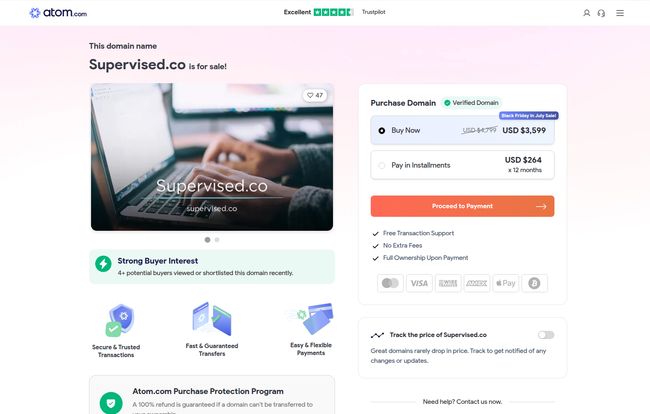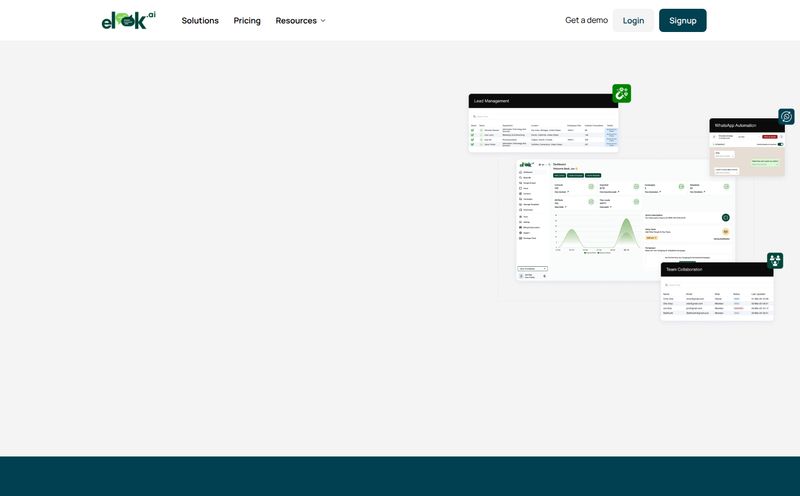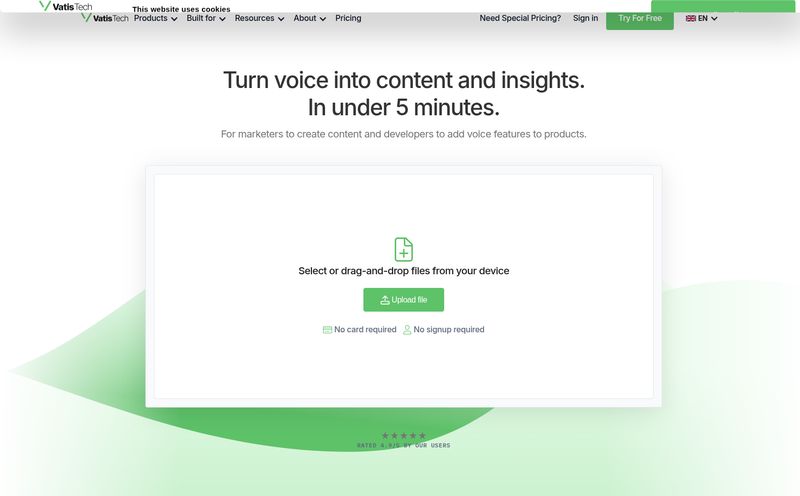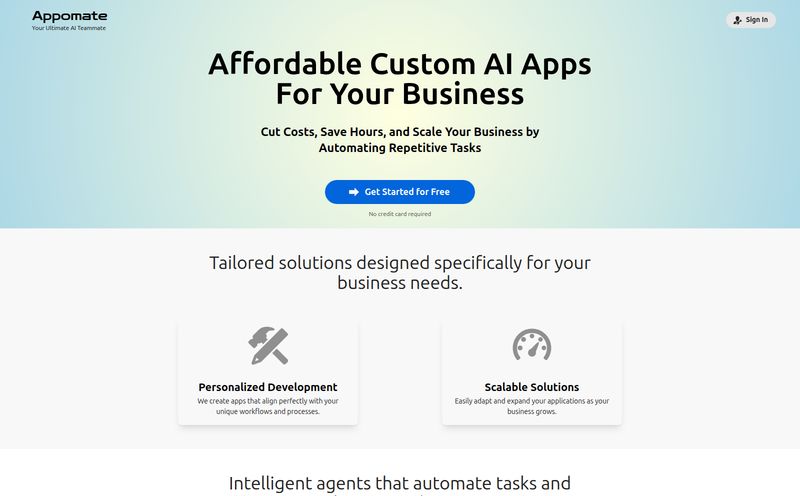As someone who lives and breathes SEO and digital trends, I've seen my fair share of tools come and go. It’s the nature of the beast. The tech world moves at a blistering pace, and for every groundbreaking platform that sticks, a dozen others flicker and fade. But every now and then, one comes along that really catches your eye, one that feels like it’s tapping into the very pulse of the industry. For me, a while back, that was a platform called Supervised AI.
The promise was electrifying. A no-code platform to build your own custom Large Language Models. I mean, come on. That’s the holy grail for so many businesses and creators who want to harness the power of AI without needing a PhD in computer science or a team of developers on speed dial. I bookmarked it, planning to circle back and do a deep dive. And when I finally did… poof. Gone. That's where this story gets a little weird.
What Exactly Was Supervised AI Supposed to Be?
So, what was the big idea behind Supervised AI? In simple terms, it was designed to be the ultimate democratizer of custom AI. Think of it like Wix or Squarespace, but instead of building websites, you were building AI brains. The platform was built on the back of OpenAI's powerful GPT engine—yes, the same family of tech behind the headline-grabbing ChatGPT—but with a crucial twist. It would let you take that raw power and train it on your own data.
This is a game-changer. A generic AI is great, but an AI that understands your company's specific jargon, your customer service history, or your unique product catalog? That’s next level. It's the difference between a generic Swiss Army knife and a custom-forged blade made just for you.
Who Was This For?
From what I gathered, Supervised AI was aiming for two main crowds. First, enterprises looking to integrate bespoke AI solutions into their workflows without a massive R&D budget. Imagine an HR department with an AI that could answer complex, company-specific policy questions, or a marketing team with a tool that could generate on-brand copy based on years of successful campaigns. The potential is massive. The second group was the individual creator, the solopreneur, the dreamer. The platform gave them the tools to not only build a cool AI app but also to monetize it. It was about turning a clever idea into a real, revenue-generating product.
Digging into the Features of Supervised AI
Even though it's now a digital ghost, the feature set that was being promoted tells a story of ambition and a clear understanding of the market's needs. It wasn't just a half-baked concept; it was a well-thought-out ecosystem.
Building Custom Brains without the Headache
The core of the platform was its no-code interface. This is where the magic was supposed to happen. Users could upload their own data—think spreadsheets, documents, text files—to fine-tune a base GPT model. This process, known as supervised learning (hence the name!), is what gives the AI its specialized knowledge. They also offered a library of pre-built models and data sources to give you a running start. It was all about lowering the barrier to entry, making AI development accessible to marketers, business owners, and thinkers, not just coders.
From Build to Billions (or at least, Billing)
Building an AI is one thing; deploying and selling it is another beast entirely. Supervised AI seemed to get this. They planned to offer cloud deployment and built-in monetization tools. This meant you wouldn't have to be a cloud infrastructure expert to get your AI app live and accessible. More importantly, the ability to charge for access via an API was a critical piece of the puzzle. It showed they were thinking about the full lifecycle of an AI product, from conception to commercialization.
The Good, The Bad, and The GPT-Dependent
No tool is perfect, and from the outside looking in, we can piece together a pretty balanced view of what using Supervised AI might have been like. It’s a classic tale of incredible potential paired with some inherent risks.
On one hand, the promise was huge. The ability to spin up a custom AI without writing a line of code is, frankly, amazing. Leveraging OpenAI's engine meant you were starting with a world-class foundation, and the easy API integration would have made it a breeze to plug your new AI into existing websites, apps, or internal systems. It was a fantastic formula.
However, let's be real, there are always trade-offs. The biggest one is the old 'garbage in, garbage out' principle. The accuracy of any AI model you built would have been completely dependent on the quality and quantity of your training data. A messy, inconsistent dataset would lead to a confused and unreliable AI. There was also the reliance on OpenAI. Your tool is only as good, and as available, as the third-party engine it's built on. Any changes to OpenAI's API, pricing, or policies would directly impact Supervised AI's users. It's a risk many are willing to take, but its a risk nonetheless.
The Elephant in the Room: Where Did It Go?
This brings us to the mystery. When I went to check out `Supervised.co` for this article, I wasn't met with a landing page. I was met with a sales page on a domain marketplace called Atom. See for yourself:

Visit Supervised AI
The domain `Supervised.co` is for sale. For a cool $3,599. Oof. That's a pretty clear sign that the project, at least in its original form, has been shuttered. A thriving tech company doesn't let its primary domain lapse and go up for public auction.
So what happened? We can only speculate. Did they run out of funding? It's a common story in the startup world. Did the founders get acqui-hired by a bigger company that just wanted the talent, not the product? Maybe they hit a technical roadblock they couldn't overcome. Or perhaps they simply pivoted to a new idea. The digital world is full of these ghost ships, promising ventures that vanish with little more than a 'Page not found' error to mark their passing.
What Can We Learn From the Ghost of Supervised AI?
The story of Supervised AI, even in its brief and mysterious existence, is a powerful lesson. It confirms the immense appetite for user-friendly AI development tools. The demand is not just there; it's screaming. People are desperate to move from being passive users of AI to active creators.
It also serves as a cautionary tale about the volatility of the tech space. It's a high-stakes game, and even the most promising ideas can stumble. For users, it's a reminder to be mindful of dependencies. Building your entire business process on a brand-new, unproven platform carries inherent risks. But for entrepreneurs? It shows there's a huge, tantalizing gap in the market waiting for the right team with the right execution to fill it.
While Supervised AI might have become vaporware, the dream it represented is very much alive. I have no doubt that other platforms will rise to take its place, and I, for one, will be watching closely.
Frequently Asked Questions about Supervised AI
- What was Supervised AI?
- Supervised AI was a planned no-code platform that would allow users to build, deploy, and monetize their own custom AI applications and Large Language Models (LLMs) using OpenAI's GPT technology and their own data.
- Was Supervised AI a no-code platform?
- Yes, its main selling point was a no-code interface, designed to make AI development accessible to individuals and businesses without extensive programming skills.
- What happened to Supervised.co?
- The project appears to be defunct. The domain name `Supervised.co` is currently listed for sale on a domain marketplace, and the website is no longer active. The exact reasons for its closure are not publicly known.
- Can I still buy Supervised AI?
- No, the platform itself is not available. The only thing for sale is the domain name. You cannot purchase or use the tool as it was described.
- What AI engine did Supervised AI use?
- It was built to leverage OpenAI's GPT engine as the foundational technology for the custom models users could create.
- Are there alternatives to Supervised AI?
- Yes, the no-code/low-code AI space is growing. While a direct one-to-one replacement might be hard to find, platforms like CustomGPT, Voiceflow, or Bubble (with AI integrations) offer ways to build custom AI-powered applications with varying levels of complexity and focus.
Conclusion
The tale of Supervised AI is a fascinating, if short, one. It was a snapshot of a brilliant idea at the perfect time—a tool to put the power of custom AI into everyone's hands. While this particular ship seems to have sunk before it truly set sail, its wake highlights the direction the current is flowing. The desire for accessible, powerful, and customizable AI is only going to grow stronger. Supervised AI might be a ghost, but it's a ghost that points directly toward the future.
Reference and Sources
- Domain Sale Listing: atom.com/domain/Supervised.co
- OpenAI: openai.com



